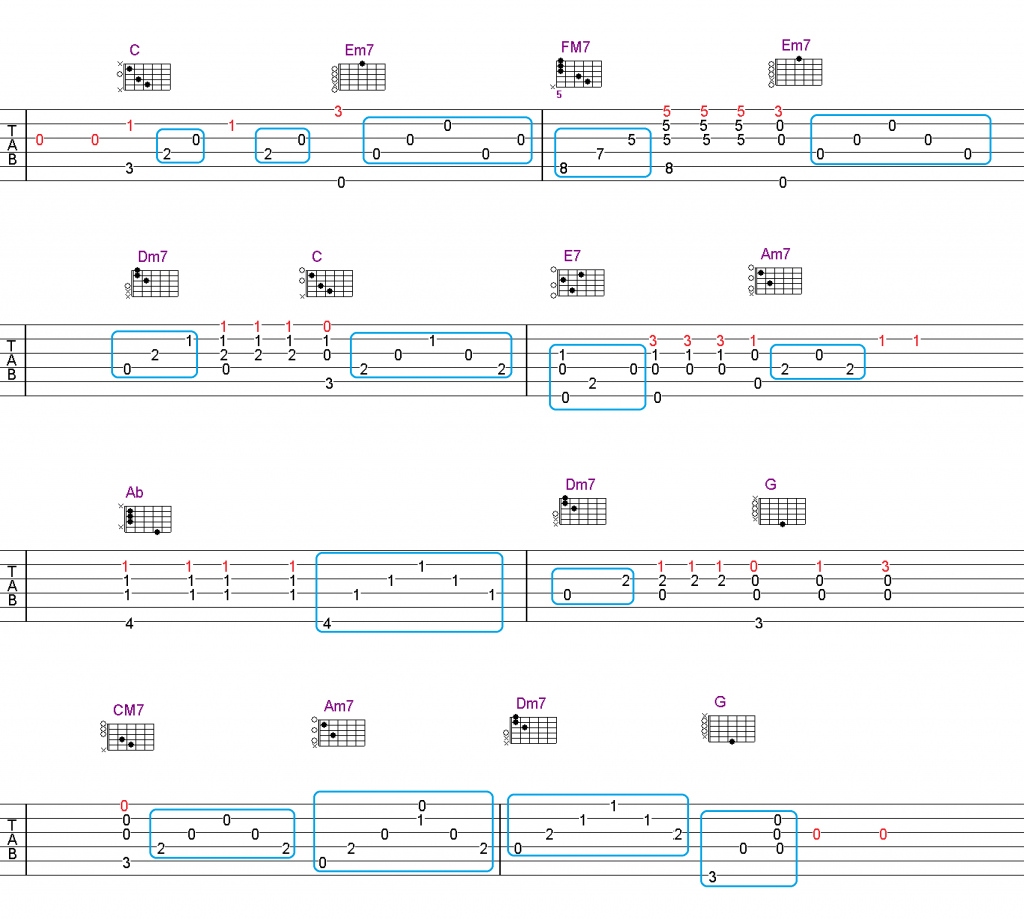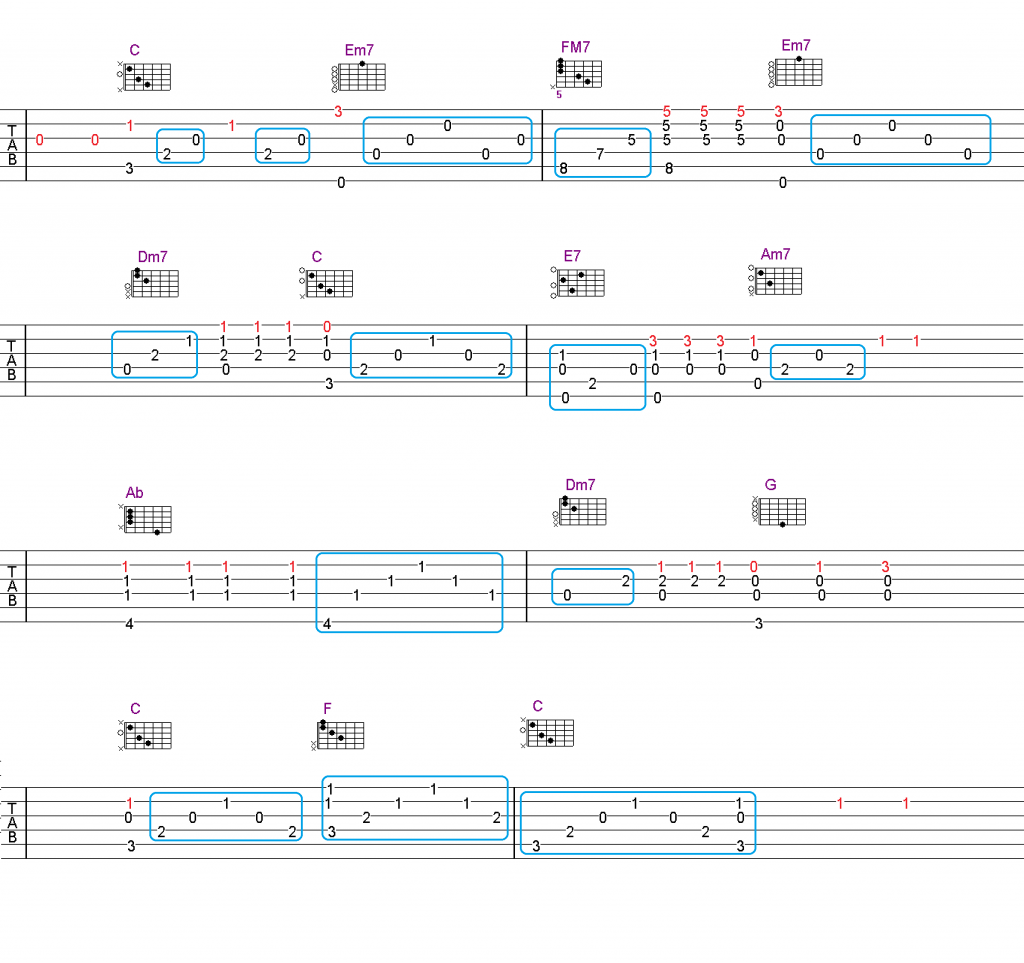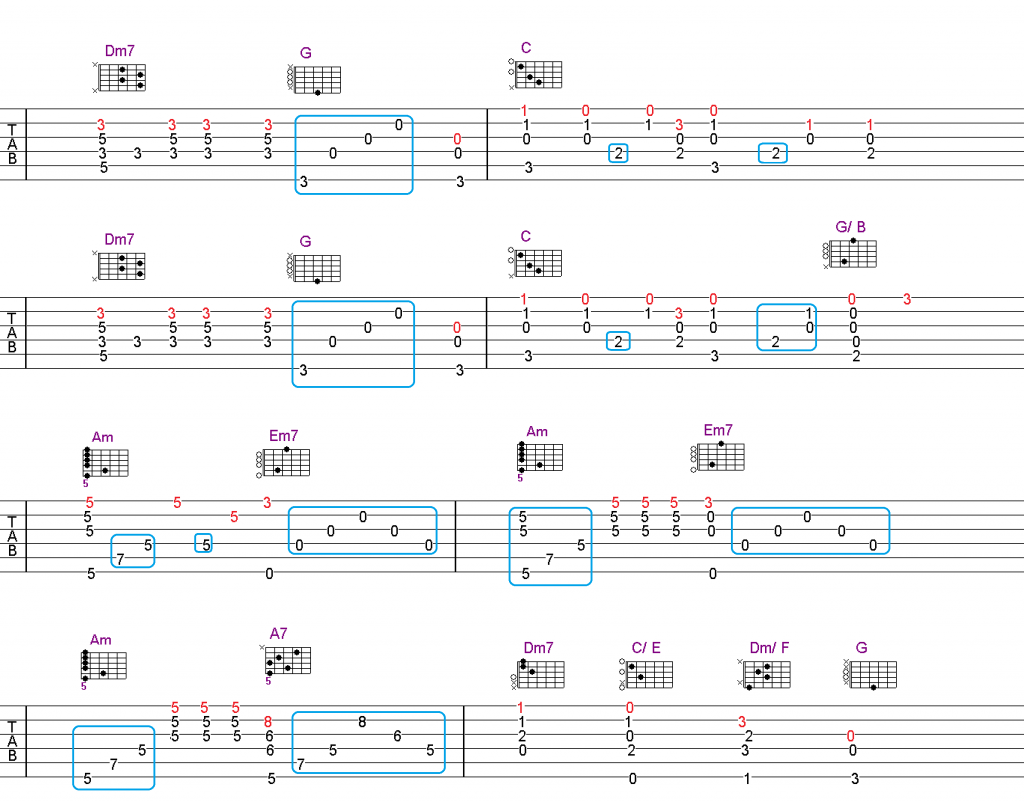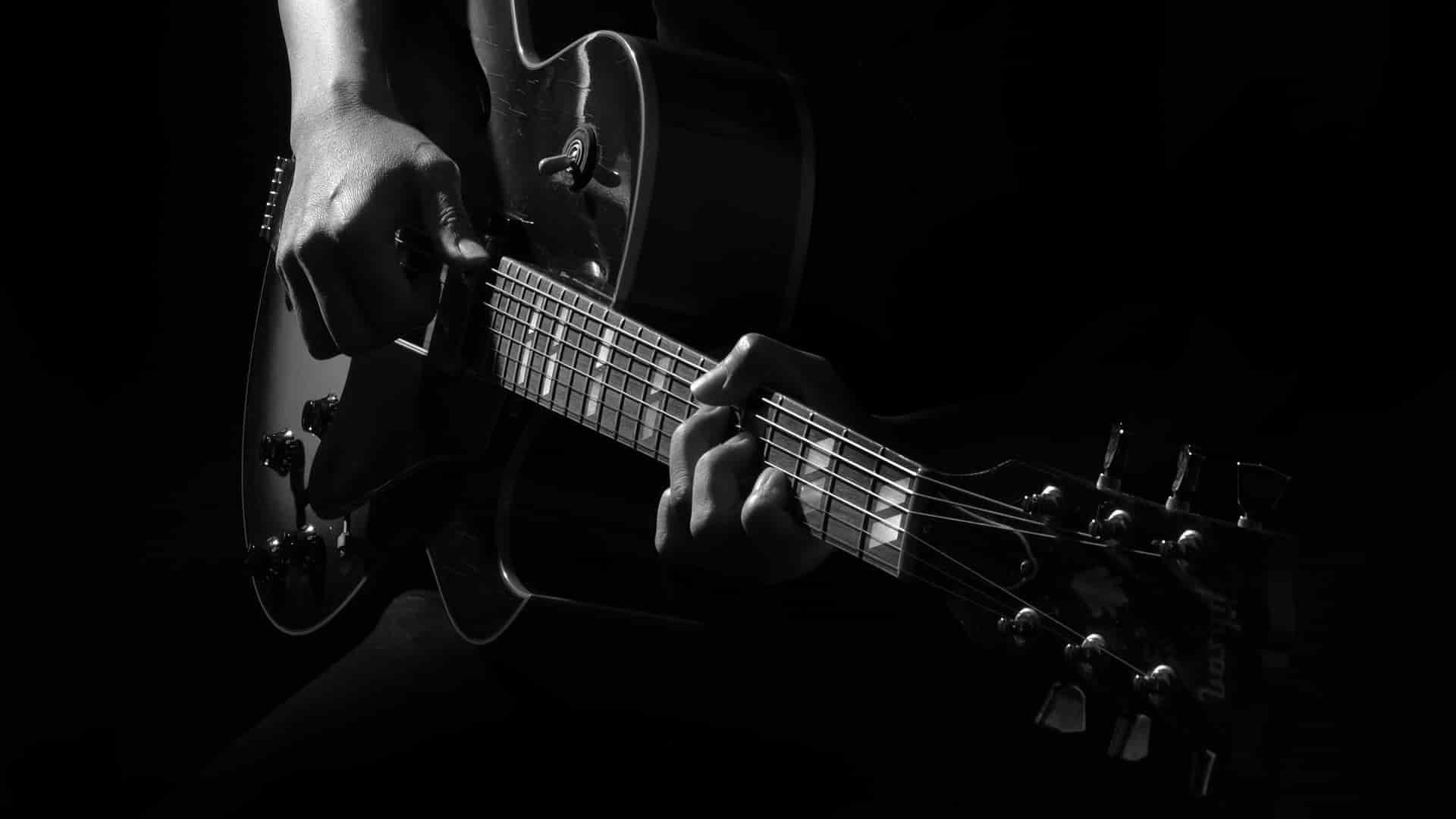GSCC Lesson 18
Past Lessons Summary and Links
If you are new to this series, here’s the links to past lessons:
We had covered all the family chords and their siblings in key of C and G Major:
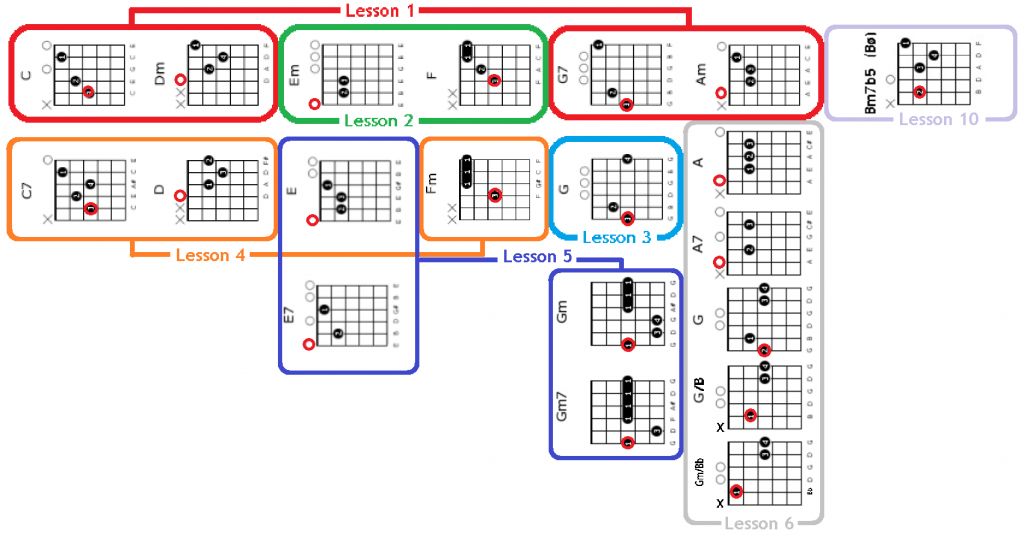
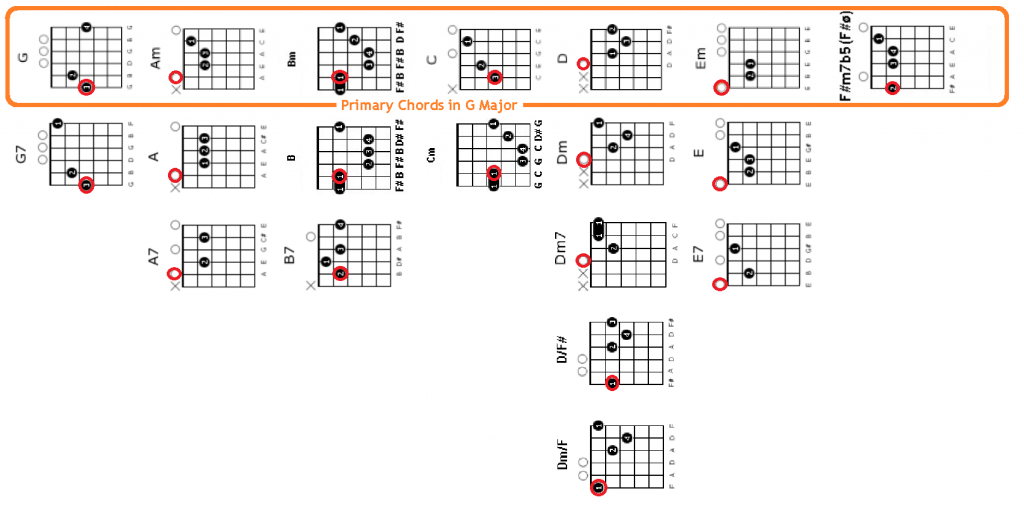
Key of C major and G major are common keys used by guitarist to play sing-along guitar.
We also looked at the guitarist best friend – CAPO , and it’s application.
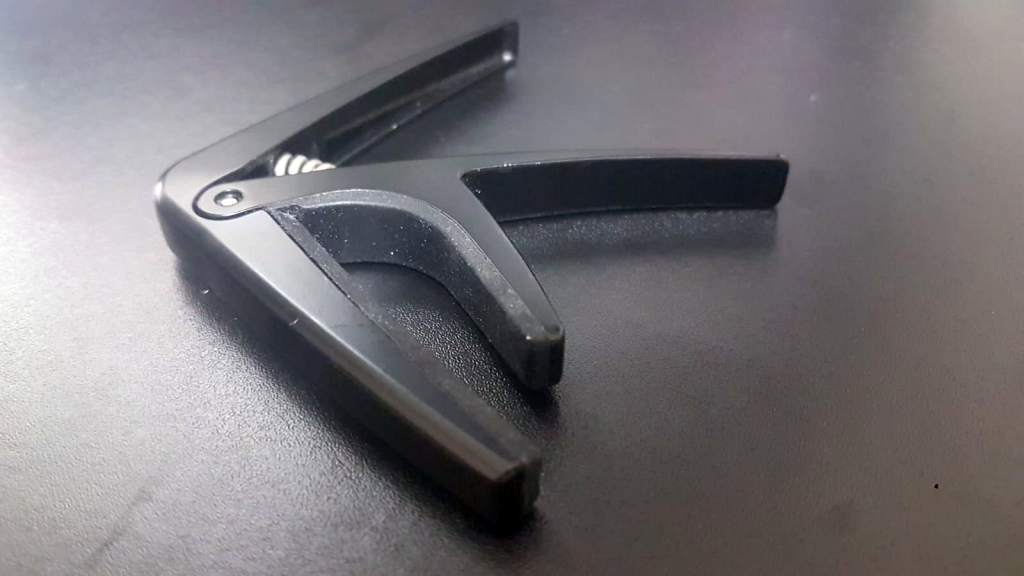
When we use the CAPO in conjunction with chords from C and G keys above , we are able to play almost every pop songs we wanted to play.
We have also looked at some basic strumming patterns:
| 1 | One strum per beat |
| 2 | Up-stroke strumming |
| 3 | Strumming lightly on first few strings |
| 4 | 16 beat strum |
| 5 | Campfire Strum |
| 6 | “Chuck” Strum |
| 7 | 3/4 Strum |
| 8 | 6/8 Strum |
And we had explored some basic pluckings.
| 1 | 8 beat pluck #1 |
| 2 | Double string pluck |
| 3 | 3/4 Pluck |
| 4 | “Alternate Bass” Pluck |
| 5 | 6/8 Pluck |
| 6 | Slap Rhythm |
And of course, we had fun learning all these songs !! They are specially produced “Karaoke for Guitar” videos (only vocal and metronome count) for you to practice your strumming / plucking:
Last week, we looked at quite a few topics.
How to move minor and dominant 7 chords across the neck:






Why are we learning those barred chords?
1. If we encountered a chord we never learned before, we can work out the chord ourselves.

2.If we play in a difficult keys, we know how to play those chords
In key of Eb – Eb Cm Ab Bb7




3.For Chord Melody Guitar playing, we can find the chord which is closest to the melody

Faster ways to build chords
- Find the bass note of the chord
- Locate it on the fretboard
- Build the chord on top of it


Establish “landmark” on fretboard


Click here to ask a question …
Two new chord types : Major 7th and Minor 7th
So far, we had learned 2 types of 7th chords: Dominant 7 (eg. G7) and half diminished 7th (Bm7b5 )

Now , let’s look at the other 2 common 7th chords: Major 7th and Minor 7th.
Let’s start by looking at Major 7th chord shapes:

As you can see here, the chord shape can also be barred and move across the fretboard and form another chord just like before.
Major 7th chord can also be written as M7 (upper cased M). Thus, C Major 7 can also be written as CM7.
Here’s a few more Major 7th chord shapes:



Now, let’s look at Minor 7th chord shapes:

Again, they can be barred and move across the fretboard to form other chords.
Minor 7th chord can also be written as m7 (lower cased “m”). Thus, A Minor 7 can also be written as Am7.
Here’s a few more Minor 7th chord shapes:



Here’s a slightly different version of Bm7 shape. It is an useful m7 chord shape to put in your chord arsenal.

Click here to ask a question …
Why 7th chord?
Yes , you may asked, what’s the difference between a C major chord and a C Major 7th chord? And what’s the difference between a A minor and a minor 7th chord?
You can play them and do a A-B comparison;)
Go play it, I will wait for you …
….
Yes, your ears will tell you that the 7th chords sounded more lush, rich and jazzy, where the basic major and minor chord sounded “hard” in comparison.
In most cases, you can interchange between the normal and 7th chords:
eg. C – Am – F – G7 ==> CM7 – Am7 – FM7 – G7
Some songs called for a more straight forward feel and some songs are more relaxed. Let your ears be the judge.
For the solo guitar song we gonna play today, a lot of 7th chords will be used. After you mastered them, you can also play it and comnpare with non 7th chords , ley your ears tell you the difference.
Click here to ask a question …
Let’s try to apply the 7th chords we just learned to another song on Chord Melody Guitar
Let’s try it on another classic song : “What A Wonderful World”
Again, we will go through the following steps:
Step 1: Play the melody
Step 2: Find out the chords
Step 3: Combine the melody and the chords
Step 4: Add in the accompaniment
Click here to ask a question …
Step 1: Play the melody
Let’s learn to play chord melody guitar of the song “What A Wonderful World”.
First, learn and play the melody:
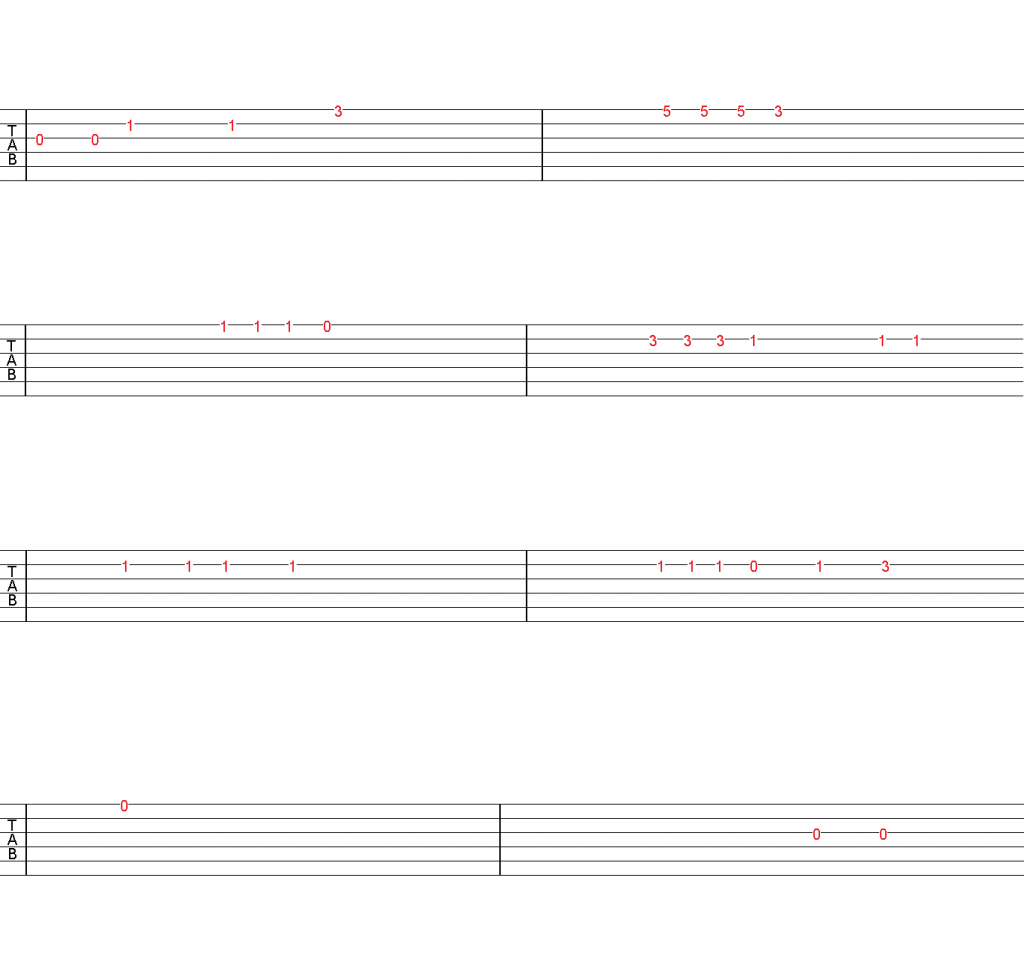

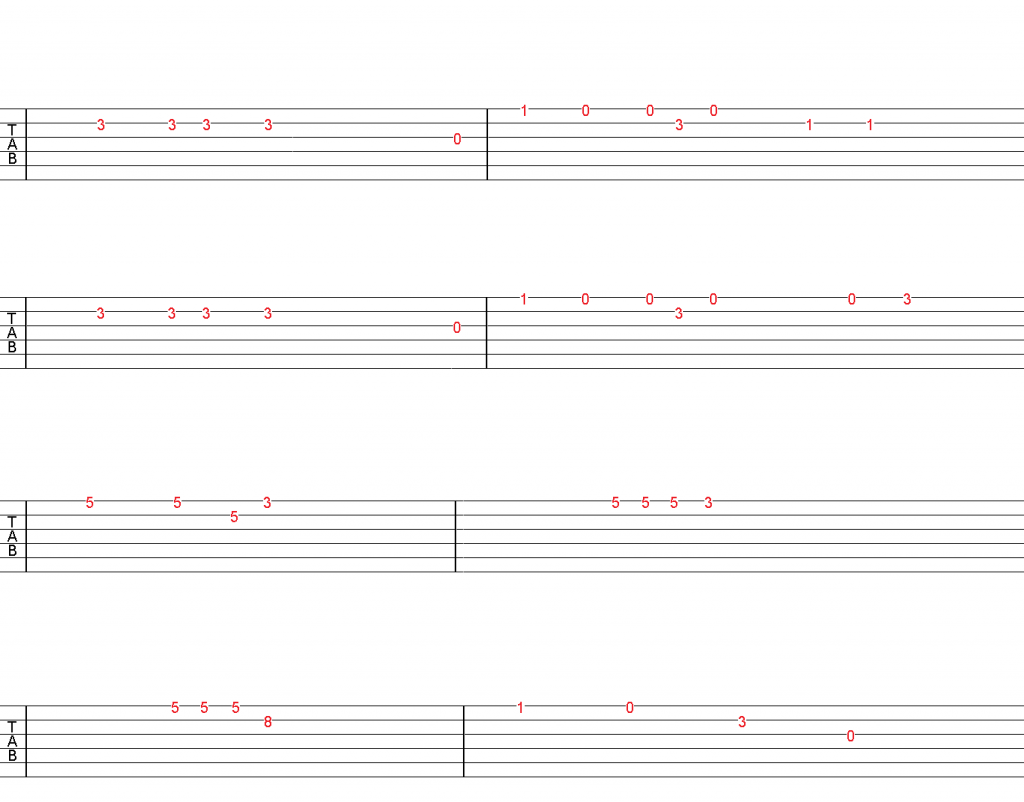
Click here to ask a question …
Step 2: Find out the chords
You can either get them online or use your ears!!
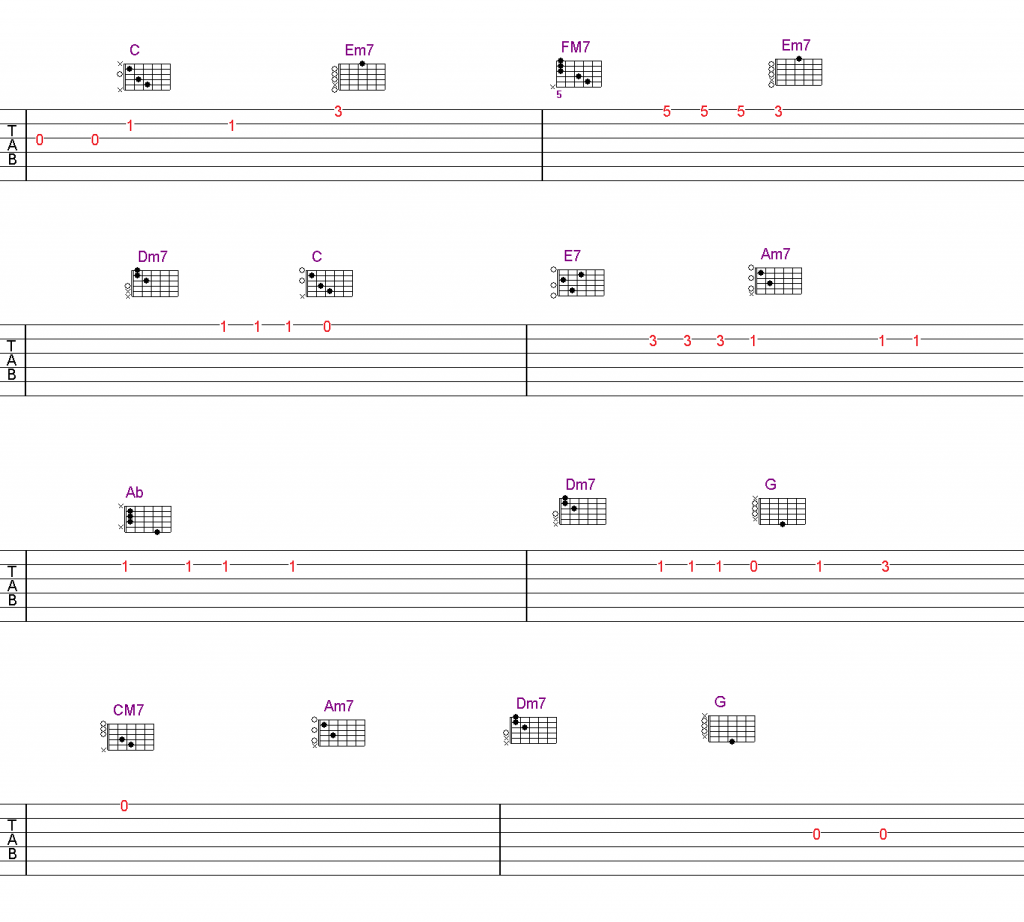
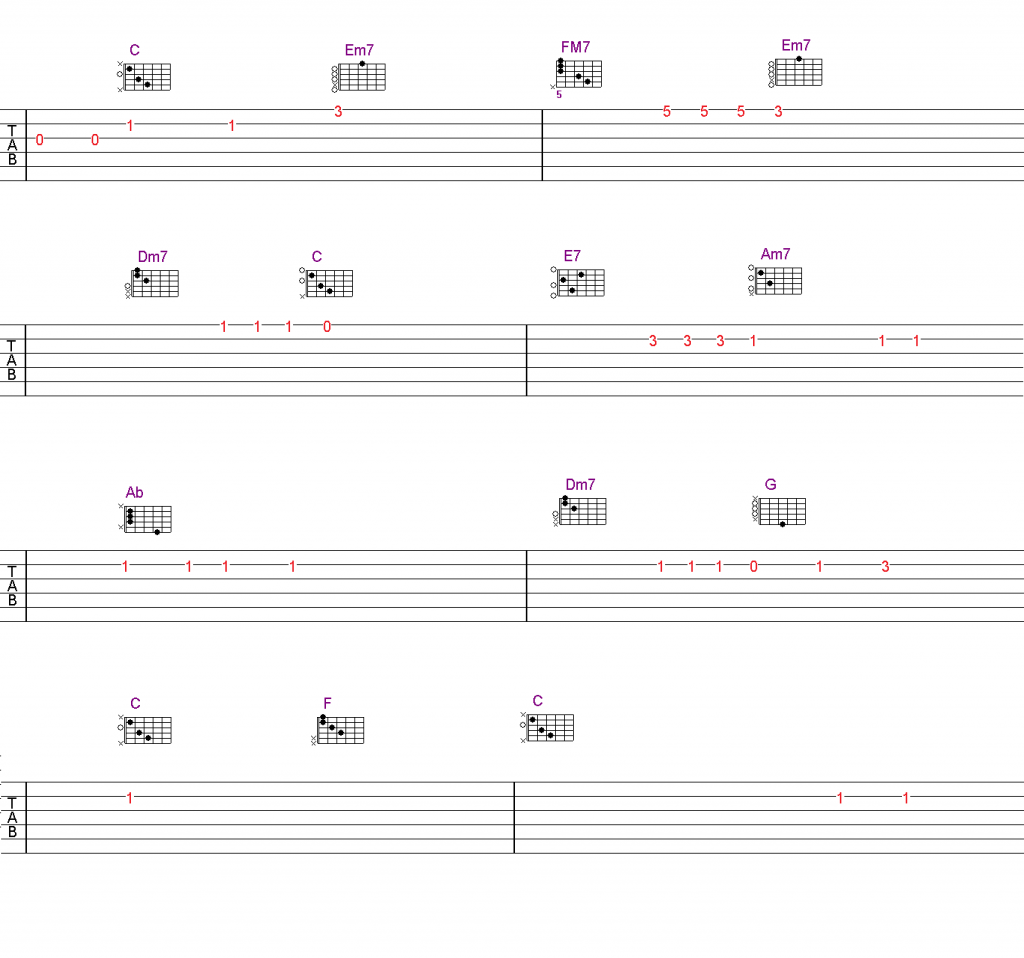
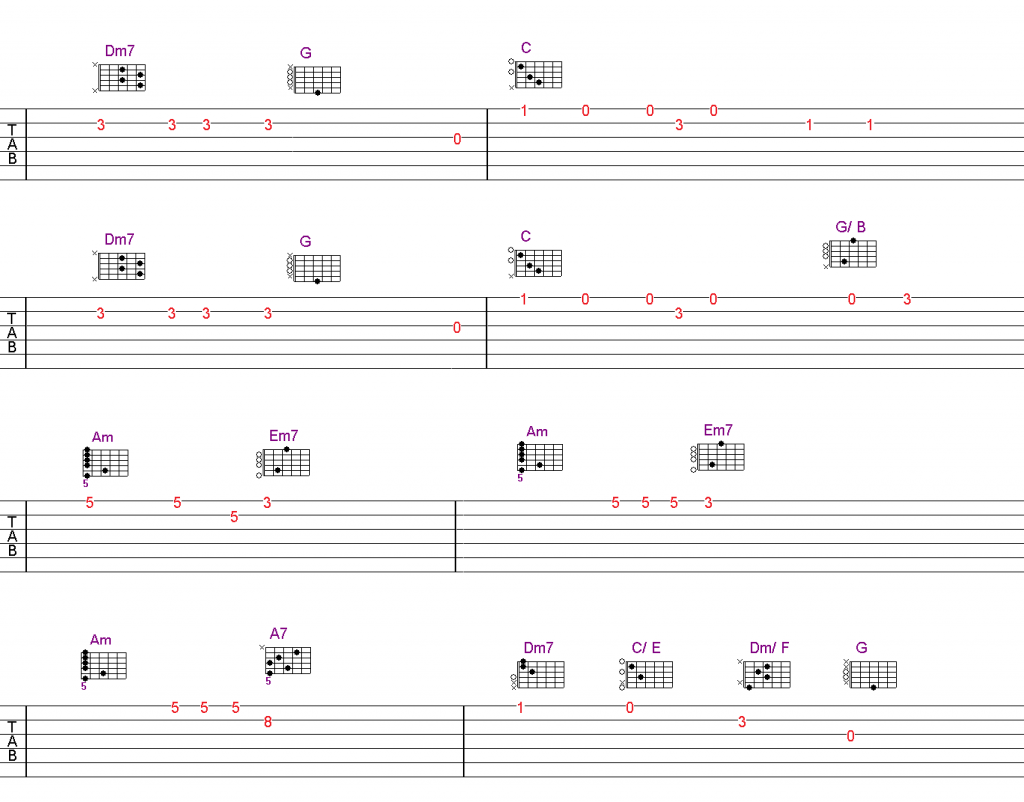
Click here to ask a question …
Step 3: Combine The Melody And The Chords
Let’s combine the melody and the chords.
As we mentioned before, the trick is to play the chords “below” the melody notes. The melody note will be the higher notes of the “chord”. This means we are gonna play part of the chords, below the melody.
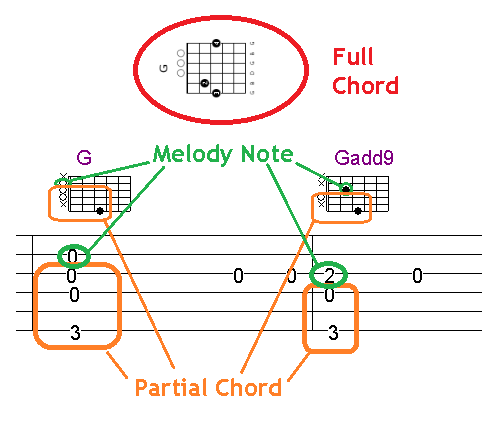
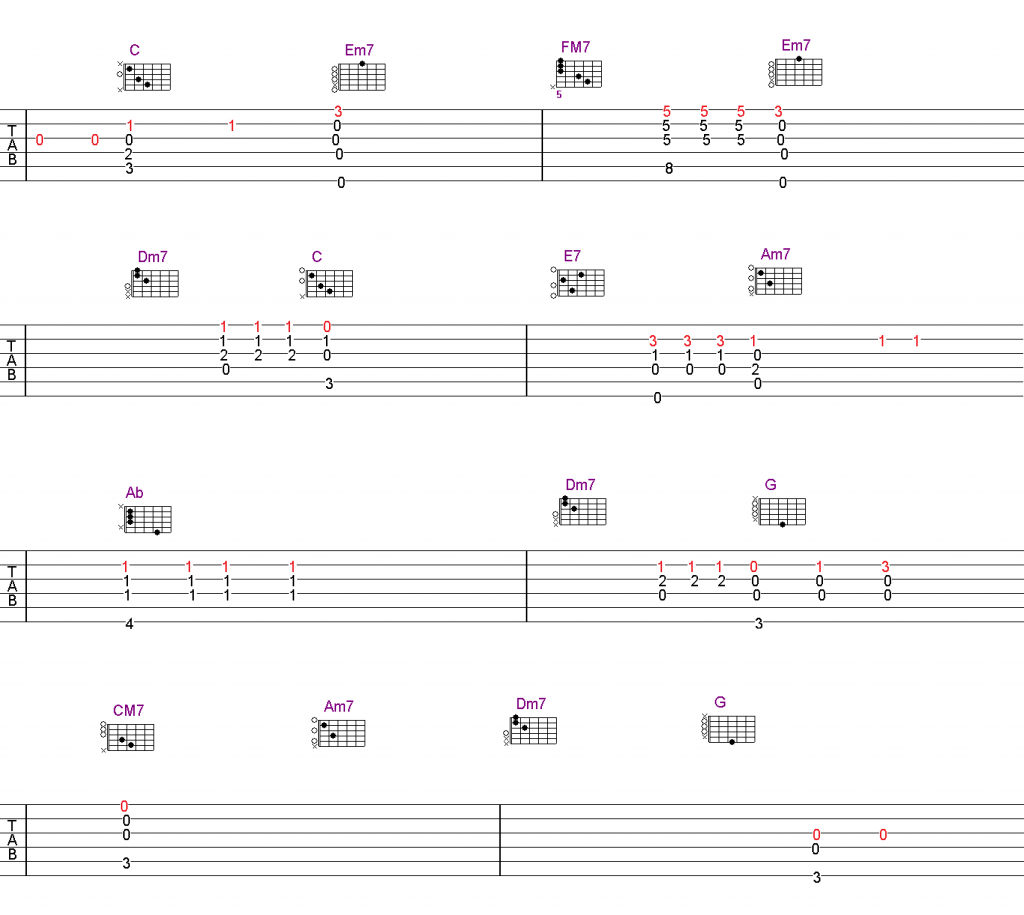
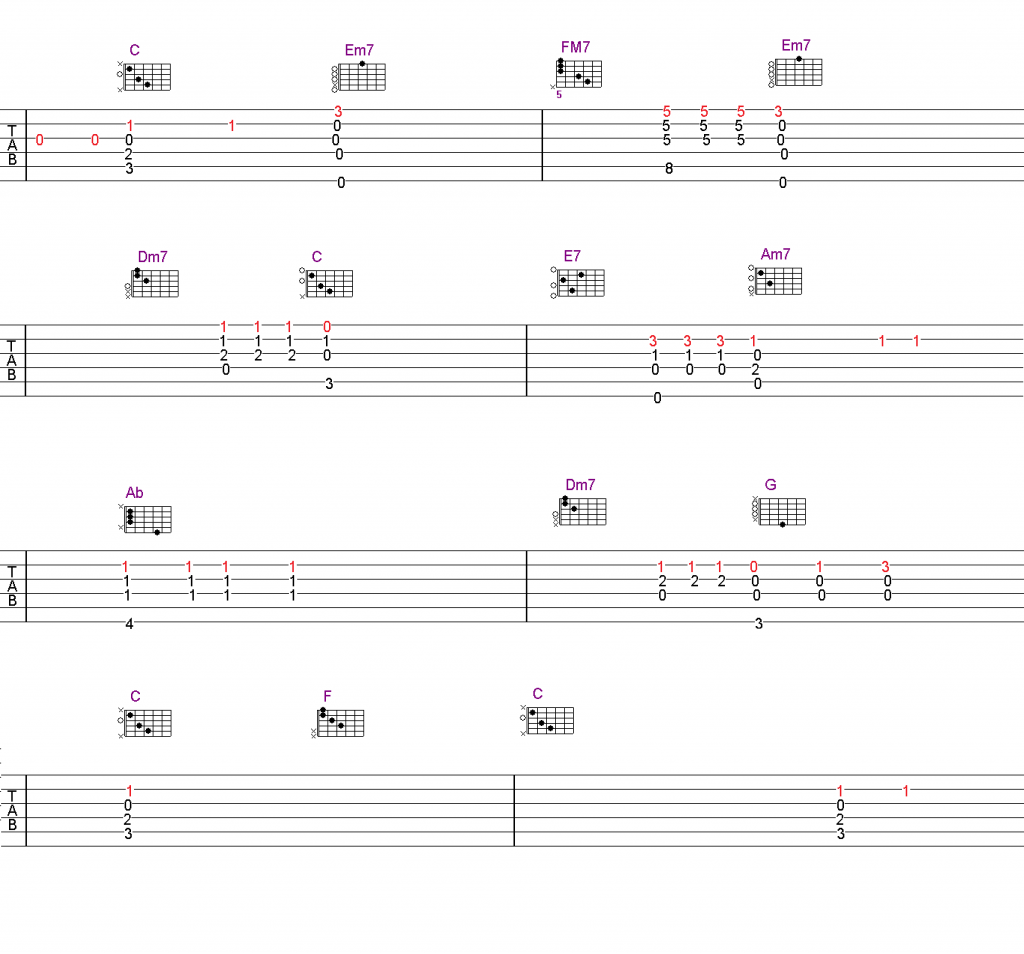

Click here to ask a question …
Step 4: Add In The Accompaniment
Yeah! We have the melody and the chords!!
Let’s make it more complete by filling in the gap between the melody.
We can fill in the gap by playing the plucking accompaniment just like we are accompanying someone to sing:
